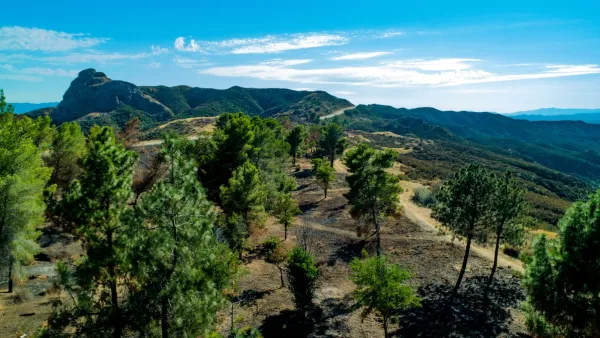The late architecture critic Reyner Banham and social historian Mike Davis had opposing viewpoints regarding Los Angeles' ecology, but in many ways their disparate takes complemented each other, writes urban planner Jonathan P. Bell.
Over time, the definition of ecology has broadened beyond the natural sciences' definition, enabling urban theorists to tap into the science to examine city life in new ways.
Two key figures in the ecological study of Los Angeles were the late architecture critic Reyner Banham and social historian Mike Davis, who examined the city's ecologies from opposing viewpoints, writes Jonathan P. Bell, an urban planner.
Banham had a benign view of the suburban sprawl surrounding Los Angeles, while Davis, concerned about the effects of uncontrolled growth, offered a more critical take on the spread, says Bell. For example, Banham saw the development of the foothill communities as inevitable due to rapid growth. Davis was more cautious and concerned, seeing foothill development as a danger to the city’s already vulnerable natural environment, Bell writes.
While their perspectives differed dramatically, the manifestos of both Banham and Davis fit together to offer a fuller picture of Los Angeles’ urban ecology.
According to Bell: "Abstracting and adopting another term from the natural sciences, one sees symbiosis between Davis’ and Banham’s ecologies. The Architecture of Four Ecologies and the Ecology of Fear are two sides of the same “ecological coin,” so to speak. They complement each other in that one provides a counterpoint to the other. Thus, each of Banham’s benevolent Four Ecologies has a darker, perhaps more realistic side according to Davis. Read together, Banham and Davis’ ecological analyses provide the reader a holistic, sobering, and revealing alternative history of Los Angeles."
FULL STORY: Reyner Banham, Mike Davis, and the Discourse on Los Angeles Ecology

Analysis: Cybertruck Fatality Rate Far Exceeds That of Ford Pinto
The Tesla Cybertruck was recalled seven times last year.

National Parks Layoffs Will Cause Communities to Lose Billions
Thousands of essential park workers were laid off this week, just before the busy spring break season.

Retro-silient?: America’s First “Eco-burb,” The Woodlands Turns 50
A master-planned community north of Houston offers lessons on green infrastructure and resilient design, but falls short of its founder’s lofty affordability and walkability goals.

Test News Post 1
This is a summary

Analysis: Cybertruck Fatality Rate Far Exceeds That of Ford Pinto
The Tesla Cybertruck was recalled seven times last year.

Test News Headline 46
Test for the image on the front page.
Urban Design for Planners 1: Software Tools
This six-course series explores essential urban design concepts using open source software and equips planners with the tools they need to participate fully in the urban design process.
Planning for Universal Design
Learn the tools for implementing Universal Design in planning regulations.
EMC Planning Group, Inc.
Planetizen
Planetizen
Mpact (formerly Rail~Volution)
Great Falls Development Authority, Inc.
HUDs Office of Policy Development and Research
NYU Wagner Graduate School of Public Service



























